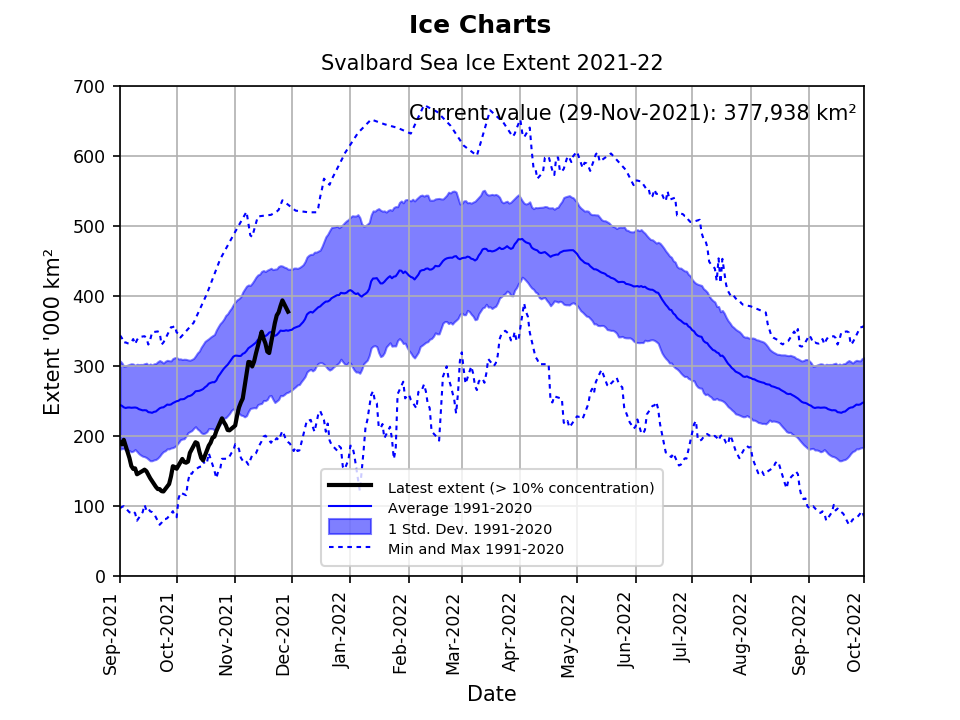Let's hope they are all snug in their dens because as noted last week, the winds were shifting:
Secondly, although the northern reaches of the Fram Strait are frozen enough for polar bears to walk over to Longyearbyen should they so desire—they don't, but they could, just to bug the Norwegians—that ice is okay but the winds have shifted and are now blowing through the Strait from the south, something that can be plainly seen at Ventusky.At the moment the wind direction over both the Fram and Bering Strait are terrible. Do click on Ventusky if interested.
From Polar Bear Science, December 1:
Early last November, sea ice around Svalbard was the lowest it had been since 1967 and pregnant females were simply unable to den on the eastern islands of the archipelago and instead had to make their dens and give birth in the pack ice or the Franz Josef Land archipelago further east, as they have done before. However, the ice is back this fall with a vengeance: even Hopen Island in the south of region was surrounded by ice well before the end of the month but whether it will attract a few pregnant females remains to be seen.
Results of polar bear health monitoring in the spring of 2021 indicated the bears are doing just fine after last year’s low ice levels. Despite this evidence, a single bear photographed killing a reindeer in August 2020 was falsely blamed on climate change. The narrative never seems to change.
Maternity dens and sea ice
Polar bear cubs are born in late December to early January and most females attempt to have a den prepared well before this event. Pregnant females that prefer to den in eastern Svalbard but are unable to reach these areas due to lack of sea ice in the fall are known to make their dens in the pack ice or within the Franz Josef Land archipelago further east (Aars 2015; Aars et al. 2017; Andersen et al. 2012). This flexibility in the face of variable sea ice conditions is an obvious evolutionary survival mechanism that has provided the species with the necessary resilience to endure hundreds of thousands of years of natural sea ice variability (both much more ice and much less ice than was present in 1980)....
....MUCH MORE
